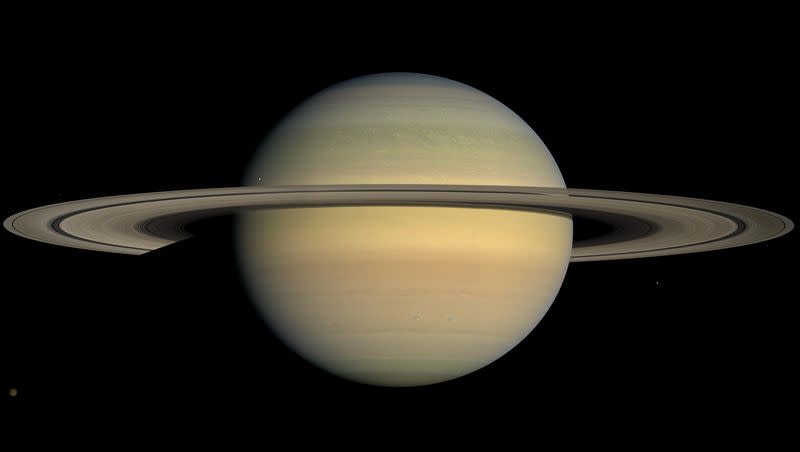All 6 elements needed for life have now been found on one of Saturn’s moons

Enceladus, a moon orbiting Saturn, has a form of phosphorus beneath its icy surface, according to the journal Nature.
Researchers from Germany, Japan, the U.S. and Finland had a “tantalizing moment” when the discovery was made, lead author of the study Frank Postberg told The New York Times.
Postberg, a professor at the Free University of Berlin, said the discovery of dissolved sodium phosphate in the waters of Enceladus makes it “the most habitable place in the solar system, at least as far as we know,” according to The Washington Post.
“But that doesn’t mean that it’s actually hosting life, that it’s inhabited,” Postberg told the Post.
Related
What are the six elements of life?
There are six elements needed for life to be sustained in a habitat: carbon, hydrogen, nitrogen, oxygen, phosphorus and sulphur, according to NASA.
Nature said phosphorus is the rarest element to find out of the six and hasn’t been found in an ocean beyond Earth’s until now.
Enceladus’ ocean “is hidden beneath a layer of ice many miles thick, but frozen particles migrate through cracks in the ice and spurt into space,” the Post said.
Postberg told The New York Times, “You could call it a ‘soda ocean,’” because of its high carbonation and bubbly nature.
Sodium phosphate was found in the ice orbiting Enceladus, spewed into space by ice volcanoes, the Times said, and analyzed “using data from Cassini, a joint NASA-European orbiter that concluded its study of Saturn, its rings and moons in 2017.”
Nature said further research and experiments suggest high amounts of phosphates could be found on the seafloor of the icy planet and other planets with a similar environment.
Related
“Beyond Enceladus, Postberg says, this discovery may indicate that other ocean worlds in the outer solar system, like Jupiter’s moon Europa or the dwarf planet Pluto, are rich in phosphates — and thus potentially habitable,” the Times said.
Planetary scientist Yasuhito Sekine told Science News that the phosphate could have originated from reactions between seawater and a phosphate-bearing mineral called apatite on Enceladus’ seafloor.
Sekine questioned the possibility of alien life on the icy planet.
“If life exists (on) Enceladus, why (does) such (an) abundance of chemical energy and nutrients remain?” Sekine said to Science News.
Mikhail Zolotov, a planetary geochemist at Arizona State University, told the Post, “We don’t know how life originated, and under what conditions,” and that there are many unknowns concerning which planet besides Earth is most habitable.

